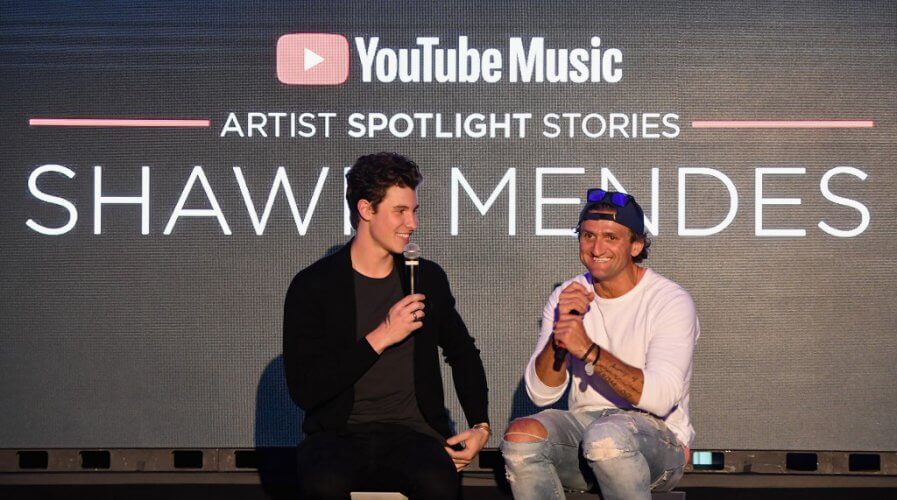
YouTuber and influencer Casey Neistat works with has worked with many brands in the past. Source: Nicholas Hunt/Getty Images for YouTube Music/AFP
Why your influencer strategy needs more than just influencers
INFLUENCERS are amazing and finding the right group of influencers can do wonders for a brand.
Take Samsung for example. The company is a fan of Hollywood Producer/Director and YouTuber Casey Neistat and works with the influencer to create eclectic campaigns every now and then.
At the 89th Oscars, for example, Samsung partnered with Neistat to create a video that showcased the community that didn’t win Oscars for their outstanding work — YouTubers.
The message is subtle: All you need is a phone with a decent camera to become a creator.
Neistat has worked on similar campaigns for Nike and Mercedes, among others, all of whom have been incredibly successful.
While working with Neistat is a great idea for Samsung, there’s more strategy in that relationship than meets the eye.
Neistat’s followers primarily fall into the Gen Z and millennial categories.
They’re young people with a disposable income and a desire to capture the world around them. Samsung’s phones, with their cameras, processing power, and software from the Android ecosystem, is perfectly suited to support them.
Until recently, Neistat was a daily vlogger (video-blogger). Many of his videos showcased him filming time-lapses or recording himself on his morning runs — all on his Samsung phone — proving to young creators that there’s no need for expensive cameras and vlogging gear.
How to pick the right influencers
There are a few thousand influencers today — in the US, APAC, and across the world. Some of them have a sphere of influence that spans the globe, others are more local or niche.
Businesses can benefit from different kinds of influencers in different ways. However, they need to have a strategy in place first.
A strategy is what will help determine who is the right influencer and what that influencer can do for the campaign.
# 1 | Sphere of influence
If a retailer is using an influencer to boost sales in a particular region, they might do better to work with a group of local influencers who can drive better engagement in their community.
On the other hand, if the brand is looking to simply boost credibility, engaging with an international icon is a better idea.
# | Platform dominance
Further, when a brand chooses an influencer, they need to make sure that the platform that the influencer is dominant on is the right platform for their message.
For example, fashion brands might get more out of their campaigns by engaging with an influencer popular on Instagram rather than Twitter.
The right platform is important because it not only ensures results but also provides the ability to drive sales or engagement in the right way.
# 3 | Alignment with brand values
While influencers might be a good fit for a campaign, they might not always be the right fit for a brand.
A vegan health-foods brand might not pair well with a bodybuilder whose Instagram account and YouTube channel are overflowing with pictures and videos featuring chicken breasts and other animal-based proteins.
Making sure that the influencer is aligned with the brand’s values and maybe its vision and mission can go a long way for the brand.
Your strategy can amplify your influencer’s reach
The point of engaging an influencer is to amplify your brand’s reach. However, for many brands, there’s value in amplifying that reach by spending money on promoting their posts and targeting the audience they desire.
This is especially true for brands that want to make sure that the influencer adds some credibility to their brand or help nudge the market towards their products and services.
Manufacturers of cosmetics products and consumer packaged goods often use such a strategy.
They work with influencers who trial their products and post on their social channels. These posts are then boosted by the brand that commissioned the initial post in order to make sure that more people see the post — people who might be new to the influencer but might know people who follow the influencer.
Organizations need to build a clear strategy before they launch their campaigns — this cannot be emphasized enough.
And although there’s no specific format or formula to build one, the bottom line is that marketers need to be able to answer the following questions before launching an influencer campaign:
- What are the goals of my campaign?
- Is the influencer I’ve chosen right for my campaign and my brand?
- How can I maximize the impact my influencer makes?
- What results will a successful campaign deliver (sales, engagement, brand recognition, etc)?
- How will I measure the outcome of the campaign?
Marketers that are able to answer these questions with ease are definitely going to get more out of their influencer marketing campaign than those that don’t.
READ MORE
- Safer Automation: How Sophic and Firmus Succeeded in Malaysia with MDEC’s Support
- Privilege granted, not gained: Intelligent authorization for enhanced infrastructure productivity
- Low-Code produces the Proof-of-Possibilities
- New Wearables Enable Staff to Work Faster and Safer
- Experts weigh in on Oracle’s departure from adland






